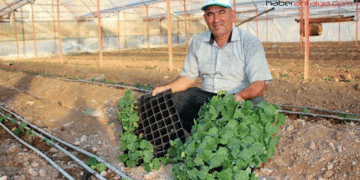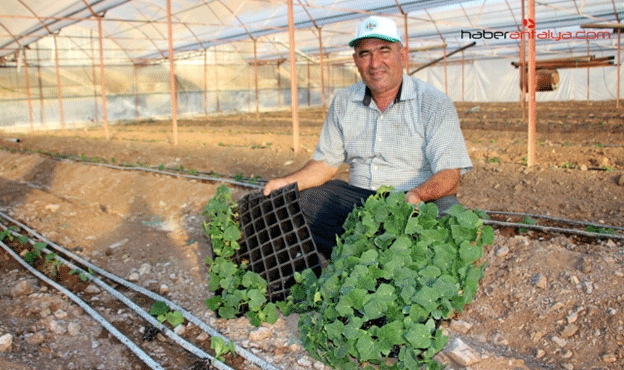In Kumluca, a district known for its extensive tomato production, farmers are facing unprecedented challenges. Hidayet Kökce, the president of Kumluca’s Agricultural Chamber, has reported a 5,000-acre reduction in tomato cultivation for the 2023 season, largely due to rising seedling costs. This marks a significant change in a region that has been a major supplier of tomatoes, peppers, and other vegetables to both the domestic market and international buyers across 28 countries.
The Shift from Double to Single Season Production
Traditionally, Kumluca farmers have cultivated tomatoes during two main seasons: autumn and spring. However, the sharp increase in the price of seedlings has forced many producers to adopt a single-season approach, reducing overall production to cut costs. Kökce explained, “We used to grow tomatoes in both autumn and spring, but with the rising seedling prices, we’ve had to reduce planting to a single season in order to lower our expenses.”
The current 50,000-acre production area in Kumluca includes 25,000 acres for tomatoes, 15,000 acres for peppers, and smaller plots for crops like eggplants, melons, and cucumbers. The decision to focus on one season has impacted not only tomato production but also other vegetables, with farmers prioritizing crops that yield the highest returns under reduced planting conditions.
Financial Pressure on Farmers
The rising cost of agricultural inputs, especially seedlings, has placed significant financial pressure on farmers. This is reflected in the reduced tomato cultivation area, which has dropped by 5,000 acres compared to previous years. Many farmers, like Orhan Gök, have expressed concerns about the increasing cost of production and the growing difficulty of maintaining profitability. Gök noted that after finishing the current round of cucumber planting, he would switch to melons or pink tomatoes in February, but expressed uncertainty about the future due to high costs.
Soner Koç, another local farmer, voiced similar frustrations: “Seedling and input prices have risen dramatically. If this trend continues, farming will become increasingly difficult. We need more market access for our products to make farming sustainable.”
Impact on Markets and International Trade
The reduction in tomato production is expected to have a ripple effect on both domestic and international markets. Kumluca exports its produce to 28 countries, and a decrease in tomato supply could lead to higher prices and reduced availability in these markets. While farmers continue to grow other crops like peppers and cucumbers, the lower tomato production may affect the overall export volume from the region.
Despite these challenges, Kumluca farmers are exploring ways to adapt. Some, like Azime Güçer, are diversifying their crops. Güçer, who farms cucumbers and eggplants with her family, remains hopeful for a good harvest despite the tough economic conditions, saying, “We’re planting today, and we hope for a prosperous return.”
The situation in Kumluca highlights the delicate balance between agricultural costs and production sustainability. As farmers face rising seedling prices, they are forced to make difficult decisions about what and how much to plant. The shift to a single-season tomato crop is a direct response to these economic pressures, and it may lead to reduced availability and higher prices both locally and abroad. However, with continued support from the government and new market opportunities, Kumluca’s resilient farmers may find ways to navigate these challenges and ensure the future of their agricultural livelihoods.


































